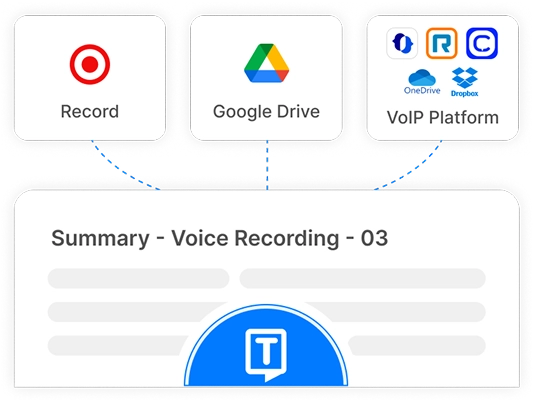
Create Your Account & Record or Upload a File
Create your Transkriptor account for free access to our professional transcription services. Record or upload your audio/video to start transcribing instantly.
Instantly transcribe meetings, interviews, calls, and lectures into precise transcripts—harness accurate AI transcription to unlock valuable insights from your conversations.
Transcribe audio to text in 100+ languages
Works with
Transcribe a Local File
Upload an audio or video file from your local device to transcribe.
Click to upload and transcribe
Record & Transcribe
Record your voice directly with Transkriptor to convert it to text.
Trusted by individuals at
Let Transkriptor automatically convert your recordings to text and analyze conversations, so you can stay focused on what matters. Powered by advanced AI transcription, it captures every word, generates smart AI summaries, extracts action items, and builds a searchable knowledge base. Say goodbye to manual note-taking.
Let Transkriptor automatically convert your recordings to text and analyze conversations, so you can stay focused on what matters. Powered by advanced AI transcription, it captures every word, generates smart AI summaries, extracts action items, and builds a searchable knowledge base. Say goodbye to manual note-taking.
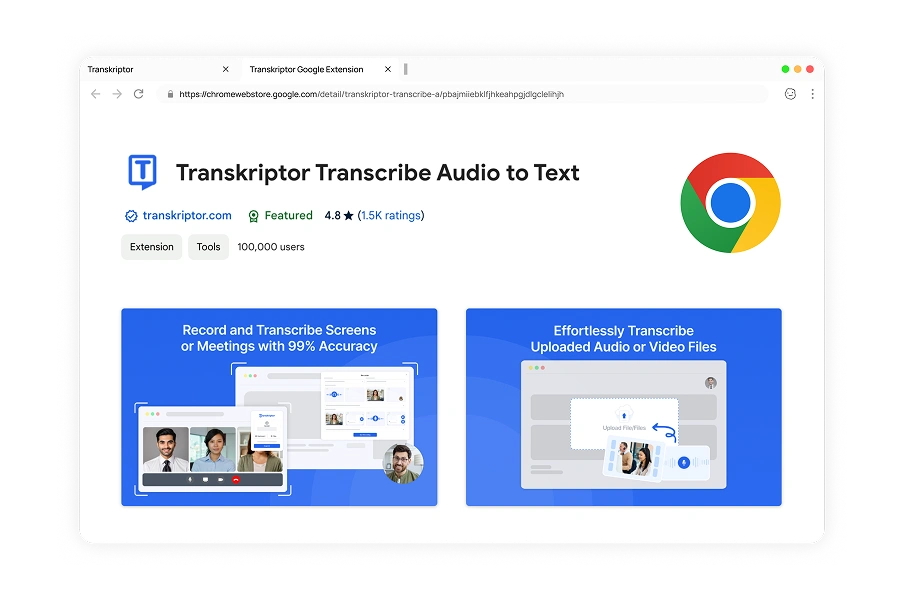
Convert audio to text with the #1 rated transcription Chrome Extension. Instantly record your screen, camera, or microphone and get accurate speech-to-text transcriptions from your browser.
Ask anything about your transcription, and let Transkriptor's AI Transcription Assistant provide accurate answers. For deeper insights across multiple transcribed files, create searchable knowledge bases using your audio transcripts or other uploaded documents.
Ask anything about your transcription, and let Transkriptor's AI Transcription Assistant provide accurate answers. For deeper insights across multiple transcribed files, create searchable knowledge bases using your audio transcripts or other uploaded documents.
Get meeting insights tailored to you with AI transcription intelligence. Transkriptor works with [Zoom](transcribe-zoom-meetings), [Google Meet](transcribe-google-meet-meetings), and [Microsoft Teams](transcribe-microsoft-teams-meetings) to capture every conversation. Choose from specialized templates for sales, marketing, education, and more—or create custom formats for your unique needs. Turn meetings into structured, actionable insights.
Get meeting insights tailored to you with AI transcription intelligence. Transkriptor works with Zoom, Google Meet, and Microsoft Teams to capture every conversation. Choose from specialized templates for sales, marketing, education, and more—or create custom formats for your unique needs. Turn meetings into structured, actionable insights.
Dive deeper into conversations with AI transcription technology. Conduct sentiment analysis, track speaker times, and uncover data-driven insights from your transcribed meetings.
Dive deeper into conversations with AI transcription technology. Conduct sentiment analysis, track speaker times, and uncover data-driven insights from your transcribed meetings.
Easily convert video to text with our powerful transcription engine - no file conversion needed. We supports a wide range of formats, including MP3, MP4, WAV, and more. You can transcribe any content quickly and without compatibility issues.
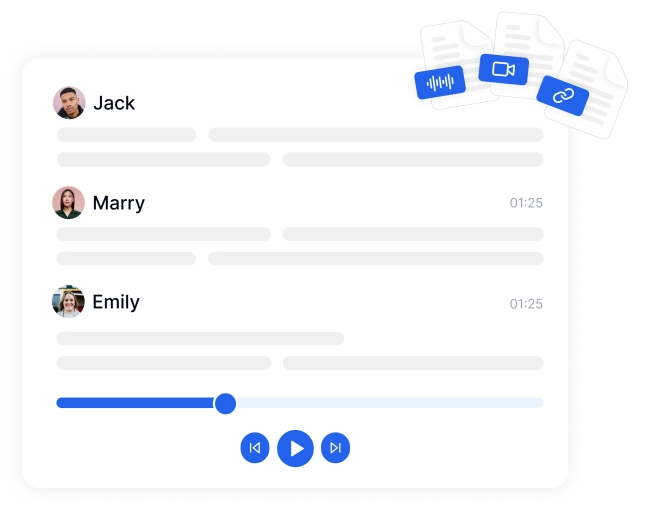
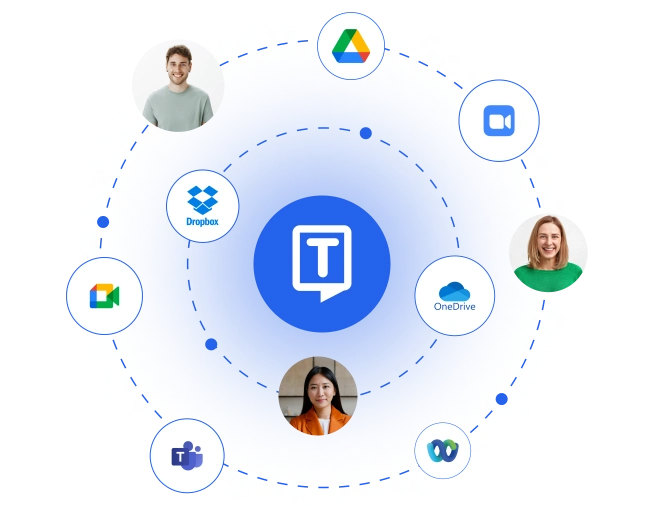
Connect Transkriptor with cloud storage, CRM, and other apps through Zapier to automatically transcribe media files and route your accurate transcripts to your preferred platforms—saving time and keeping your transcribed content perfectly organized.

Create your Transkriptor account for free access to our professional transcription services. Record or upload your audio/video to start transcribing instantly.
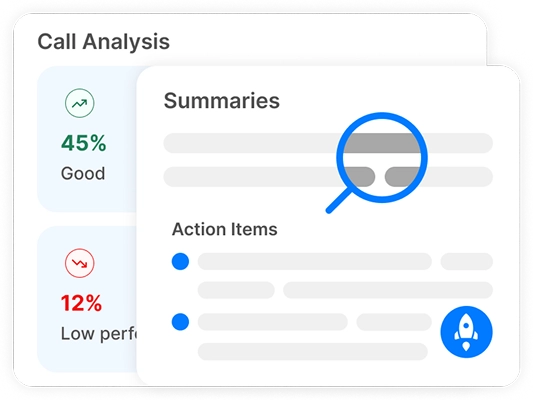
Transkriptor provides fully editable transcripts, AI-powered call sentiment analysis, AI summaries, and key topic breakdown.
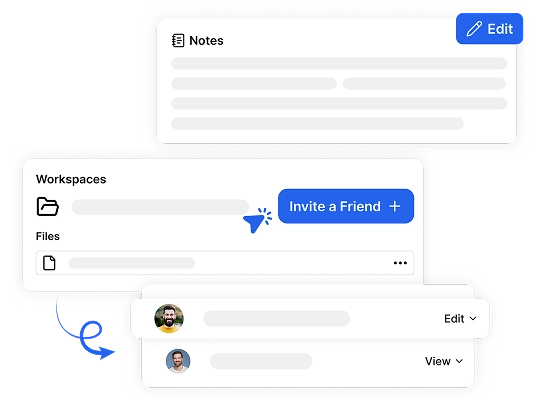
Your notes and audio transcriptions are stored securely for easy access. Organize your meeting notes and searchable transcripts in folders & workspaces.
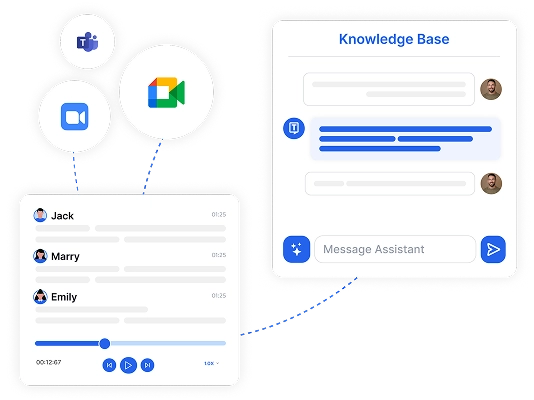
Leverage our AI transcription technology to extract insights and knowledge bases from multiple files, and ask questions or speak with your voice-to-text transcripts.
Translate your transcripts to any language with a single click. Understand voice recordings in any language, and create searchable transcripts in the language you need.
Convert your videos into accessible content with fast transcription services and automatic subtitling in 100+ languages.
Ask questions, get summaries, and extract insights from your transcribed content instantly.
Manage access, share files, and collaborate seamlessly in dedicated workspaces.
Add custom tags to any of your files. Find important moments quickly and organize content your way.
Analyze the tone and sentiment of transcribed meetings. Perfect for customer service and team communications.
Track speaking time distribution and participation levels in conversations.
Unlock the Power of Advanced AI Transcription for Every Aspect of Your Work. Try it Today - Elevate Productivity, Simplify Workflow!
Turn speech into accurate transcripts in seconds. Professional transcription technology for audio and video content, so you can focus on insights, not note-taking.
Capture every moment with clarity. Record and transcribe your screen easily for tutorials, presentations, and more—review and search transcribed content whenever you need it.
Never miss a detail again. Automated transcription, AI meeting summaries, and action items from your meetings, transforming conversations into searchable transcripts while enhancing productivity.
Bring text to life with natural voices. Convert written text to realistic spoken words, enhancing accessibility and engagement.
Effortless content, perfectly written. Transcribe your ideas into high-quality, engaging content tailored to your audience with minimal input.
Your team's transcribed knowledge is just a click away. Centralized AI knowledge base that organizes, retrieves & streamlines transcribed conversations seamlessly.
Transkriptor prioritizes security and privacy at every level. Our enterprise-grade transcription platform complies with SOC 2, GDPR, ISO 27001, and SSL standards to ensure your audio and video data is fully protected and securely transcribed.
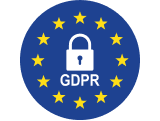

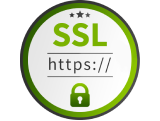
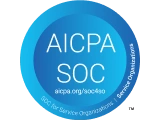
Transkriptor's powerful AI note-taker generates online transcriptions in seconds while most services take more than 10 minutes.
Get up to 99% accuracy when transcribing your audio files with Transkriptor. Transcribe or translate your content in 100+ languages easily.
Get your money's worth with Transkriptor's full stakck of productivity features and intuitive solutions for an affordable price.
Transcription is the process of converting spoken language from audio or video recordings into written text. It is widely used for meetings, interviews, lectures, podcasts, and media content. Transcription can be done manually by human transcribers or automatically using AI transcription software.
Transcription works by converting spoken words from audio or video into written text. You upload a file to a tool like Transkriptor, which uses AI to detect speech, identify speakers, and generate a timestamped transcript. You can then review and edit the text, and export it in formats like TXT, DOCX, or subtitles (SRT/VTT).
The benefits of transcription include improved accessibility, better content searchability, and increased productivity. It turns spoken content into written text that's easy to read and repurpose. Transcription also supports SEO by creating indexable content. AI tools like Transkriptor automate the process, saving time and resources.
Transcription accuracy is affected by several factors, including audio quality, background noise, speaker clarity, overlapping dialogue, accents, and the number of speakers. Poorly recorded audio or strong accents can reduce the effectiveness of AI transcription tools. High-quality microphones, clear speech, and minimal interruptions improve results.
Yes, modern transcription tools like Transkriptor can handle multiple speakers by using speaker diarization technology. This feature identifies and labels each speaker in the transcript, making it easier to follow conversations in meetings, interviews, or group discussions.
The best transcription software is Transkriptor. It offers highly accurate AI-powered transcription with up to 99% accuracy for clear audio. Transkriptor supports over 100 languages, lets users upload audio or video files in various formats, and includes features like speaker identification, subtitle generation, and a built-in transcript editor.
You can conduct sentiment analysis for conversations using AI-powered tools like Transkriptor. Transkriptor's meeting bot can join your online meetings directly or analyze uploaded recordings. After transcription, it automatically evaluates the emotional tone of the conversation—classifying segments as positive, neutral, or negative.